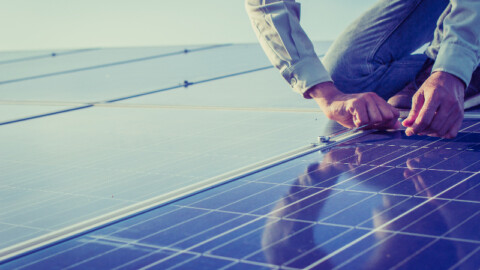By the Australian Energy Market Operator (AEMO) Energy Live
For most of Australia’s history, electricity has come from big power sources. Up until around a decade ago, a power station was typically a huge coal-fired steam turbine plant that took many hours to turn on or off. And until very recently, we had almost no way to store most of this power. All around the world, this is now changing.
We are moving into a world of distributed electricity, flowing from multiple sources rather than a few giant structures.
US research firm Navigant, borrowing a term from online technology, has talked of an ‘energy cloud’ made up of millions of small suppliers.
It’s a world in which most consumers will have much wider energy choices.
New technology falls in price
Thanks to a fall in prices over the past decade, solar photovoltaic cells have become a viable way to generate electricity, says Stuart Allott, AEMO’s group manager of communications and corporate affairs.
While companies have been creating large solar farms to produce electricity, households have been creating another major source of solar power; solar arrays on the roofs of their homes.
Wind power too has come down in price, as companies learn how to make more efficient wind generators.
Electricity storage becomes affordable
Electricity experts of three decades ago noted that electricity could not be effectively stored. But new battery technology originally developed for laptops and phones has changed that.
Efficient, affordable battery storage makes solar and wind power far more useful, allowing power from these sources to be stored and fed back into the grid when needed.
They effectively become an additional power source for the whole national system.
Tesla, known more as an electric car manufacturer, made headlines last year regarding its 100-megawatt battery array near Jamestown, South Australia.
Further north, at Port Augusta, the SA Government has also commissioned a 150-megawatt solar thermal plant whose molten salt system can store the sun’s heat for several hours.
The salt storage technology lets the plant produce energy during the evening, when electricity demand is highest.
Such plants produce far less power than a plant like NSW’s coal-fired Eraring Power Station. But there will soon be far more of them.
Experts like Jo Witters, head of AEMO’s Centre for Innovation, and Tony Wood, director of the Grattan Institute Energy Program, expect dozens of these cleaner-power, small generation plants to join the system in the coming years.
All this power is flowing through a national transmission system that can now send substantial amounts of power from sunny parts of eastern Australia to other areas that may be overcast and windless.
In a highly interconnected system, the ability to move power is as important as storing it.
Putting the puzzle together
As Mr Allott notes, another way to meet demand is to have some electricity users agree to stop taking energy or provide power from sources like backup generators at peak times – what is sometimes called a ‘virtual power plant’.
AEMO has already struck a deal of this sort for the 2017-18 summer.
In the years ahead, Allott says more consumers will likely be able to make similar deals, getting paid for minimising their use when demand for electricity is highest.
Mr Wood points out an additional source of change in the system. In recent years, many power plants have moved from government to private ownership.
When governments build power assets, Mr Wood notes, they tend to build more than what is needed.
Private owners often find ways to do things more cheaply, because their owners share in any savings. But as Mr Wood points out, private owners are less willing to build generating capacity that may not be used.
The result of all these changes is now emerging. It’s a substantially different power system where many sources of power enter and leave the grid at different times of day and night – Navigant’s ‘energy cloud’.
No longer does the bulk of Australia’s power come from sources that stay on 24 hours a day – as of 2017, AEMO has calculated that coal has fallen to under 50 per cent of the Australian electricity and gas system’s total supply.
And a rising proportion of the electricity fed into the system now comes from electricity users – businesses and households that don’t think of themselves as ‘electricity businesses’.
As the system evolves, more and more consumers will have greater control over how they use and pay for power.
As the system evolves, CSIRO modelling raises the possibility that by 2050, up to 45 per cent of Australia’s electricity supply could be provided by millions of such sources around the country.
The body in charge of turning all these pieces into a reliable, affordable electricity supply is AEMO. It works within government policies while advising the government on how to ensure Australia has electricity ready as the generation mix changes.
Keeping the lights on
AEMO’s job is to look ahead and make sure the national electricity system always has electricity ready to be dispatched, while keeping downward pressure on prices. Mr Allott describes it as a careful balance.
“Our role is to keep the lights on,” he says.
AEMO’s target for availability of supply, at 99.998 per cent, is one of the world’s most stringent, Allott notes.
AEMO’s task will continue to evolve over the years as the electricity industry evolves, with Wood expecting the evolution to take “the next couple of decades”. It’s an explosion of innovation and consumer choice that will change Australia.
For more information or to read other industry insights from AEMO, visit energylive.aemo.com.au.

















